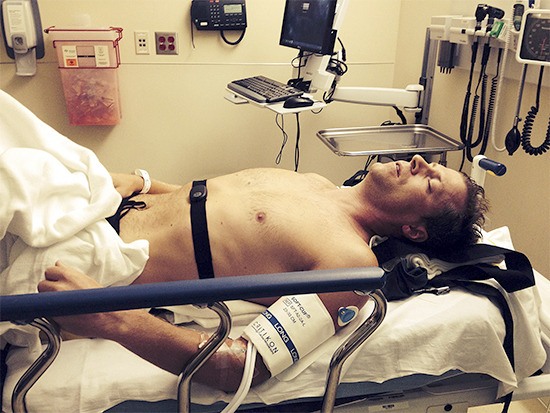Pierce County Councilman Dan Roach learned first hand that wearing a helmet when riding a bicycle can save lives – it saved his.
Roach was involved in serious bicycle accident Aug. 23 while training for the Labor of Love Triathlon.
While turning onto the West Tapps Highway portion of the triathlon course, Roach was cut off by a dog. Roach hit the dog full on, and performed what many bicyclists coin as an “endo” – short for end over end, when bicyclists are thrown off their bikes over their handlebars.
Roach broke his right collarbone and three ribs in the crash, but did not suffer any head injuries because he was wearing a helmet.
He described the crash as a “hit and slam,” and that he did not skid too far on the road.
Witnesses on the road called the 911 for Roach.
Along with his injuries, Roach’s helmet was severely damaged. “The impact hit the back right side of the helmet, right behind the ear,” he said. A large piece of the helmet broke off because of the impact, and the helmet cracked through the middle.
Roach said the accident was “potentially fatal” because he landed on his head, and the crash would have been a “whole different story” if he wasn’t wearing his helmet.
Behind the ears is the temporal lobe part of the brain. The temporal lobe is responsible for sensory input and when damaged, can disturb hearing, vision, verbal skills and long term memory, as well as cause personality changes, according to the Centre for Neuro Skills.
The Insurance Institute for Highway Safety reported there were 722 reported bicyclist deaths in 2012, 469 of those deaths, or 65 percent, were from not wearing a helmet during the crash. Of the 123 deaths, 17 percent, were wearing a helmet when they died. It is not known if remaining 130 deaths, or 18 percent, were wearing a helmet when they died.
According to the National Highway Traffic and Safety Administration, bicycle helmet use is 85 percent effective at mitigating head and brain injuries and preventing deaths.
Additionally, a recent National Highway Traffic Safety Administration study found the highest source of injury for bicyclists, 29 percent, is being hit by a car. The lowest cause of injury, at four percent, is when a dog runs out in front of a bike.
Roach said he does not know whether or not the dog he hit was injured, or where it went after the crash.


